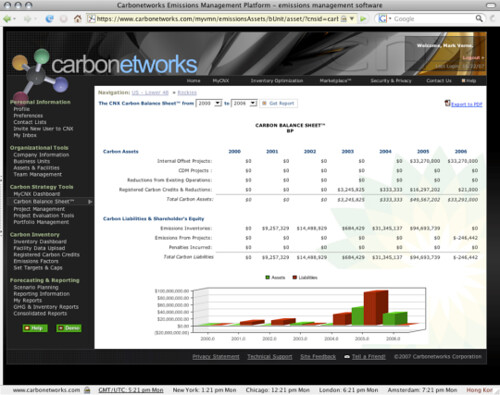 Screenshot credit Carbonetworks
Screenshot credit Carbonetworks
I wrote a quick blog post about Carbonetworks the other day when it was announced they secured $5 million in series A financing.
I made the mistake though of assuming their software was a simple carbon accounting solution. It goes well beyond that.
Yesterday, in a phone call with Carbonetworks co-founder, President and CEO Michael Meehan, I discovered that their offering is a full carbon strategy platform.
The app is an online app and according to Michael, Carbonetworks has about 180 subscribers in 23 countries. The app at its most basic helps companies understand what their carbon footprint is, and then helps the companies translate that into a financial bottom line. The app helps companies see what options they have to reduce their carbon footprint and helps them create a carbon strategy from a managerial perspective on how to proceed in the carbon market.
The app can normalize carbon data across all of a companies facilities, and then monetise it so companies can think of their carbon as either an asset or a liability on the balance sheet! This is a clever approach which will change how companies look to their supply chain, or how they approach investments, for example.
Then when you get to the reduction space, Carbonetworks helps there too. Carbonetworks has what they call their marketplace where they offer fully verified offsets as well as a network of other reduction options so companies can have a diverse spread of carbon reduction investments.
Where this gets even more interesting and the reason I called Carbonetworks a platform is because they are currently working on opening up their API so that other companies can use their backend. if they pull this off, they will be the first to market (that I have heard of) with an open platform like this.
If you had programmable access to an online carbon platform like this, what would you do with it? Think of the mashups you could create!



